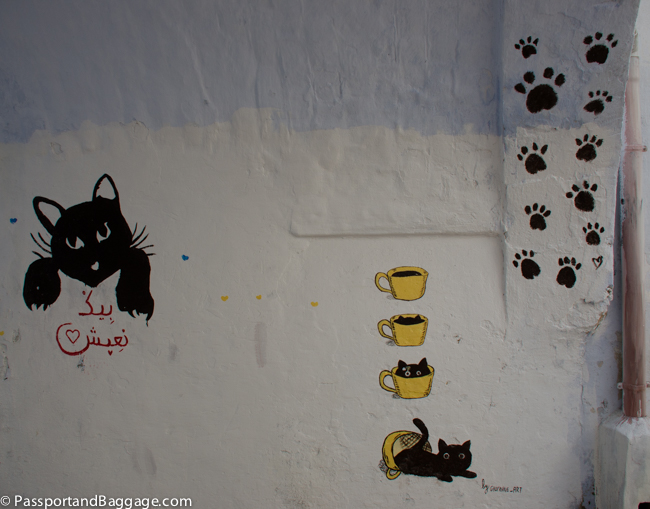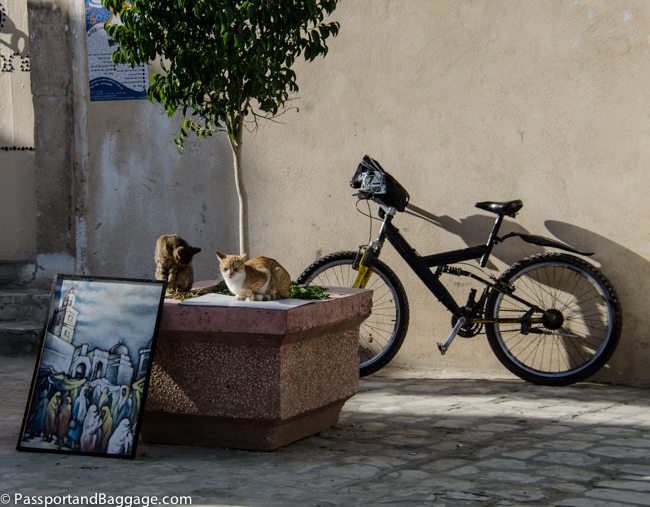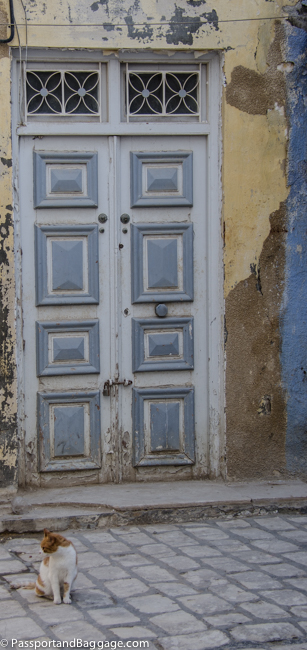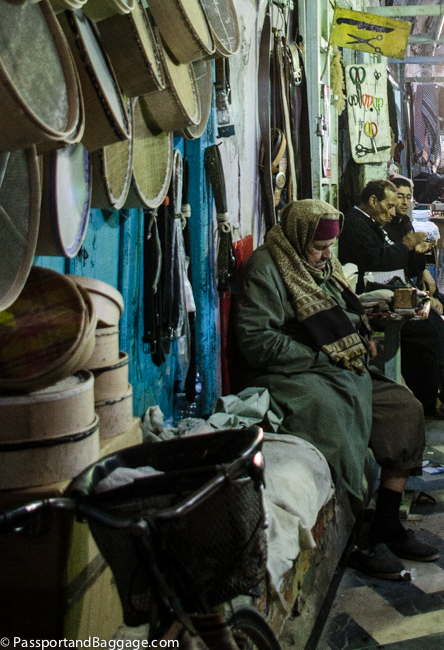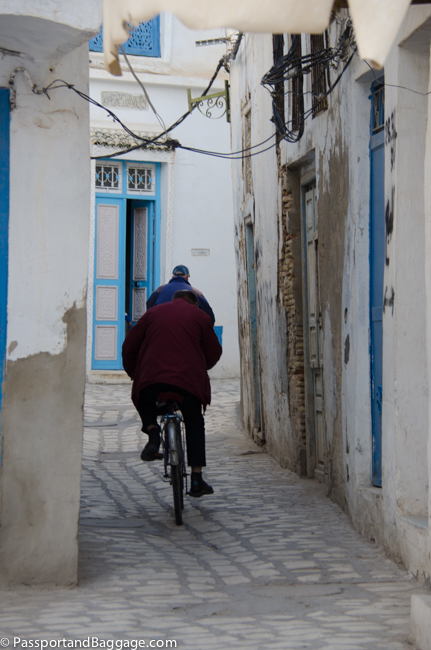December 7, 2019
I am in Kairouan because the entire town is a UNESCO World Heritage Site. The number one attraction in Kairouan is the Great Mosque, recognized as the third most significant religious site in Islam because it is the first mosque, in the first Muslim town, outside of the then known Arab world. For centuries, the Great Mosque of Kairouan has served as a pilgrimage destination for North Africans not able to make the long trip to Mecca. According to popular belief, seven trips to Kairouan is worth one hajj to Mecca.
In the mid-seventh century, the Arab expansion reached the Mediterranean Sea, which was dominated then by the Byzantine Empire. The Arab influence would spread across the desert and where this started was Kairouan, for more than four centuries North Africa’s leading link between East and West.
It took the Muslim Arabs some 50 years to dominate central North Africa, which they called al-Maghrib al-Adna (the Nearest West) and the Romans called Ifriqiya. The domination was held at bay by the Byzantines, with their stronghold at Carthage who ruled the coast and inland where the Berber tribes controlled the oases.
The Arab’s chose a site to begin their siege that lay on an inland plain one day’s march from the sea—a safe distance from the Byzantine navy—and at an equally cautious remove from the highlands sheltering Berber tribes that variously allied with and fought the Arabs. The site was named al-Qayrawaan (Kairouan), which Arabized the Persian word for caravan and today carries an English meaning close to “garrison camp.”
Here they constructed a large mosque, today the oldest mosque in North Africa, although it has been rebuilt and renovated several times
Writing at the end of the 10th century, Arab geographer al-Muqaddasi described Kairouan as, “more inviting than Nishapur and bigger than Damas [Damascus], more prestigious than Isfahan.” Yet he also included the fact that “Its water is not good,” “Its collection is done by storing rainwater in reservoirs.”
Al-Muqaddasi was referring to what was then the most advanced water supply system in any contemporary Islamic city, the Aghlabid Baths. They consisted of 15 circular pools just outside the city walls that were filled with rainwater or runoff from the nearby wadi. Today, you can see four of the cisterns preserved as a public park.
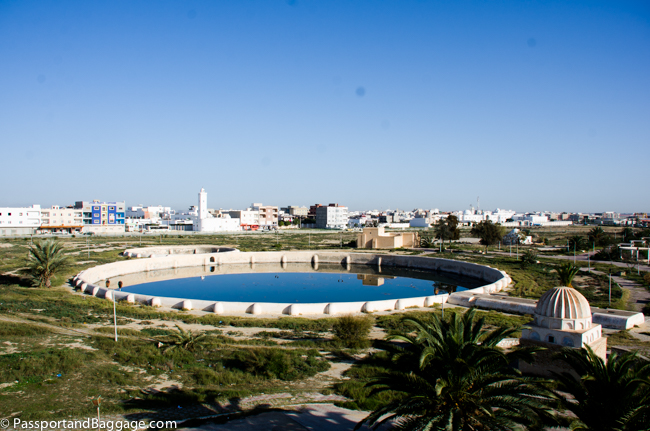
The basins are named for the Arab-Muslim dynasty the Aghlabids. They ruled the region known as Ifrīqīyah (Tunisia and eastern Algeria) from 800 CE to 909 CE. The basins were built under the instruction of Prince Abū Ibrāhim Aḥmad, one of the 11 Aghlabid emirs
Abutted up against the mosque is the old medina, with the typical winding, pedestrian-only streets consisting of 2000 either dilapidated or restored homes for the 17,500 residents.
The medina of Kairouan is considerably more approachable and enjoyable as it is a working medina with no tourist trade. There are trinkets to be had but they are few, and the people that are shopping are locals looking for goods that everyone seeks out for the day to day needs of life.
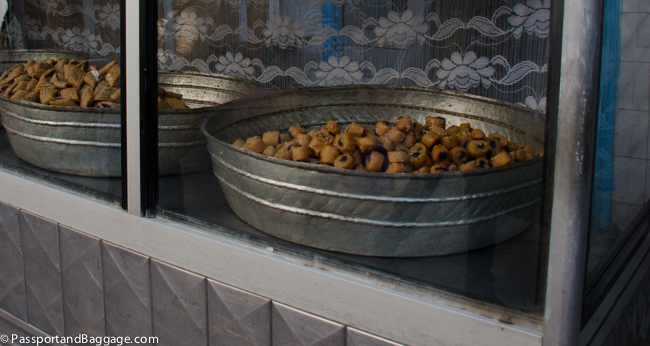
Kairouan’s famous specialty is the little diamond-shaped sweet known as maqroudh. It is part of the Berber cuisine and is made with semolina, olive oil, honey, and dates.
*
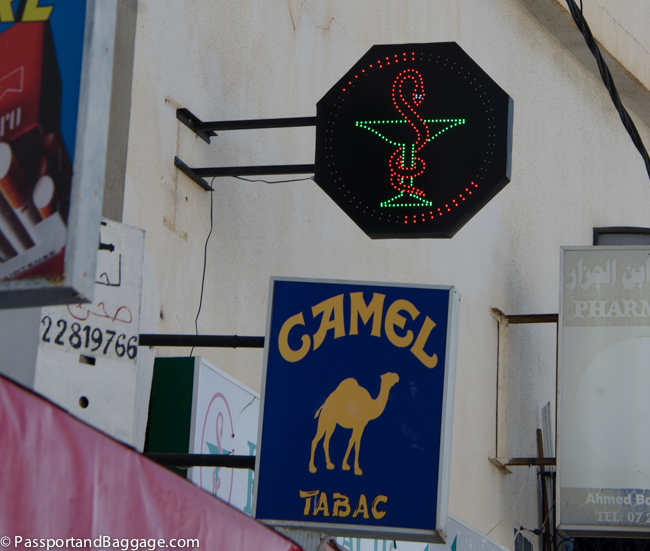
This is quite obviously meant to be the sign of caduceus indicating that this is a pharmacy. It appears to be a snake wrapping around a martini glass to this author. I also found it interesting that it sits above a cigarette ad.
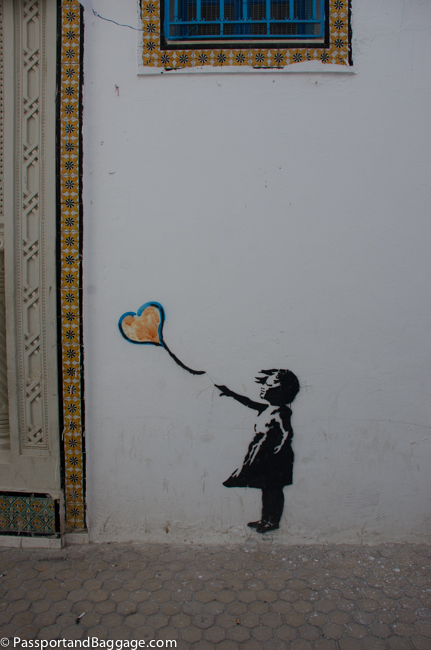
An excellent copy (or not) of “Girl with Balloon”? A 2002 series of stencil murals by the graffiti artist Banksy
*
*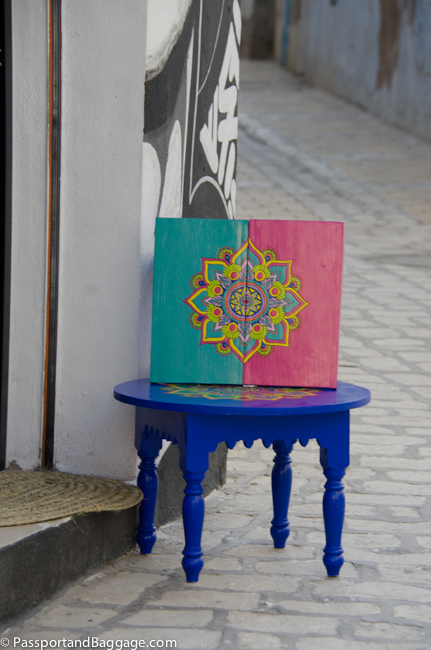 *
*
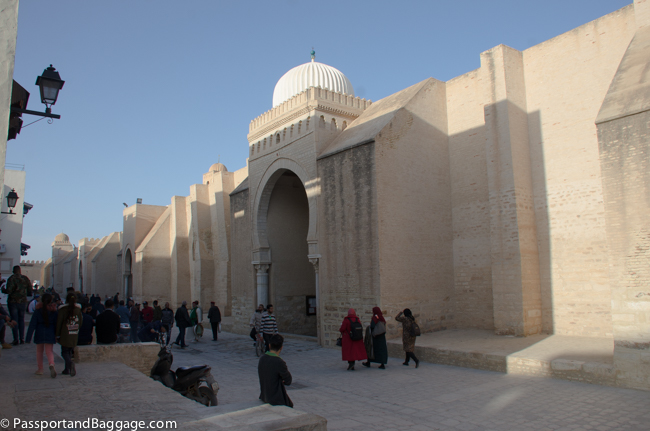
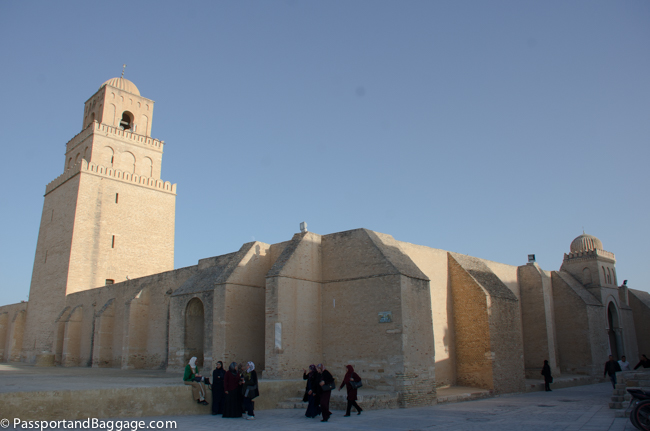
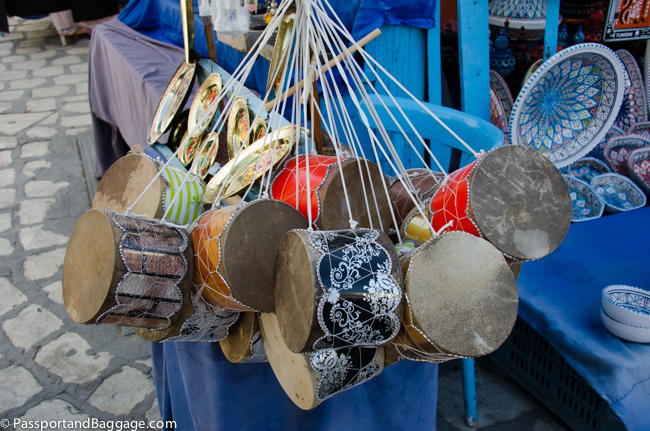
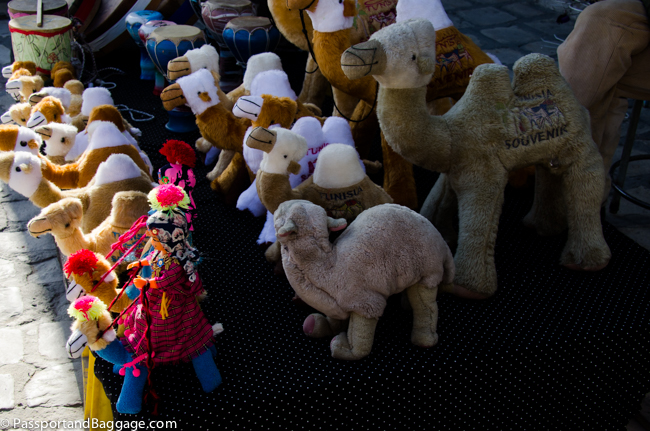
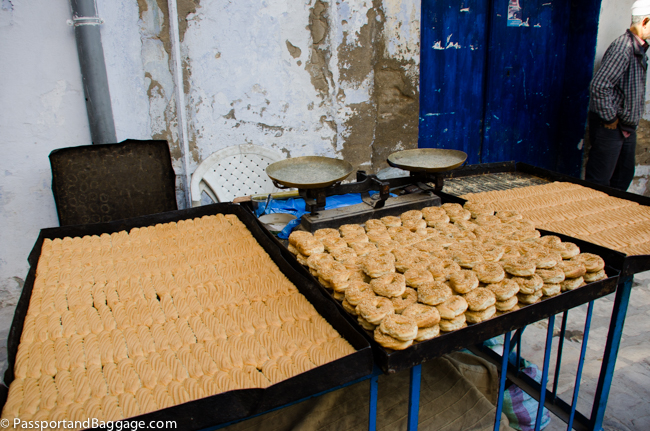
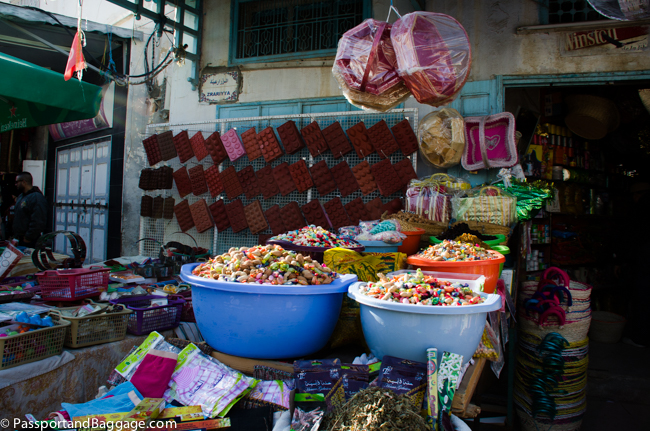
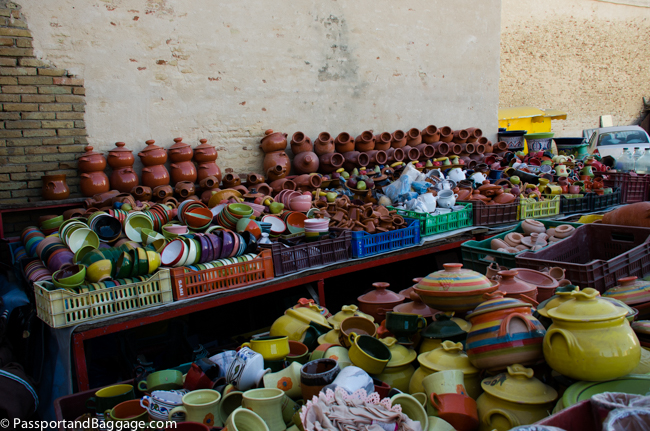
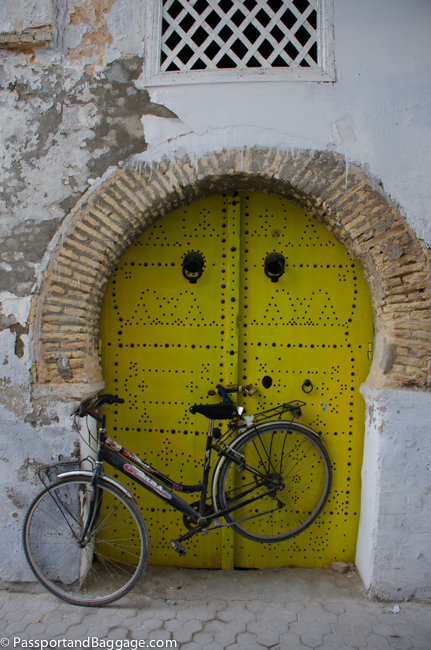 *
*